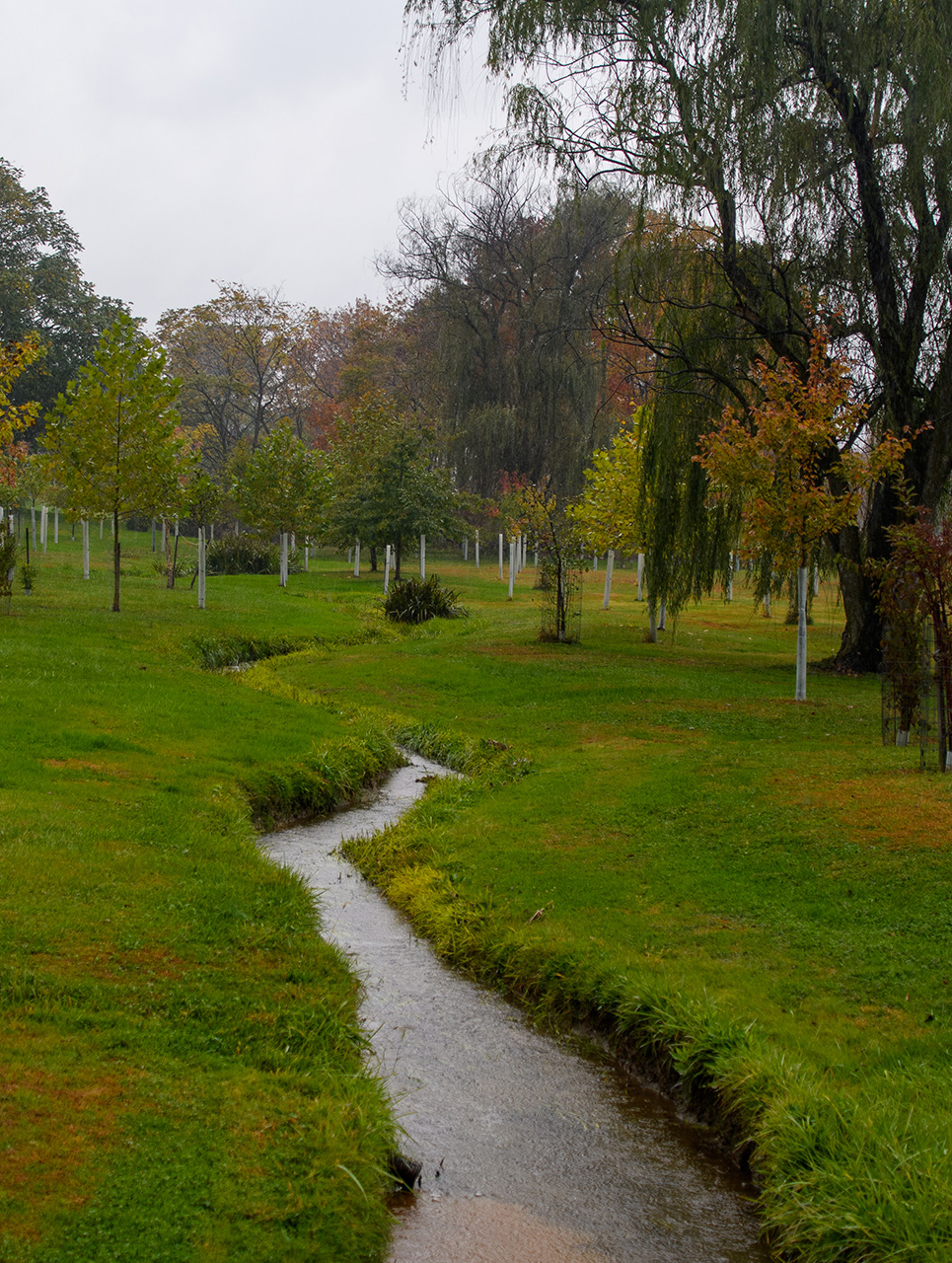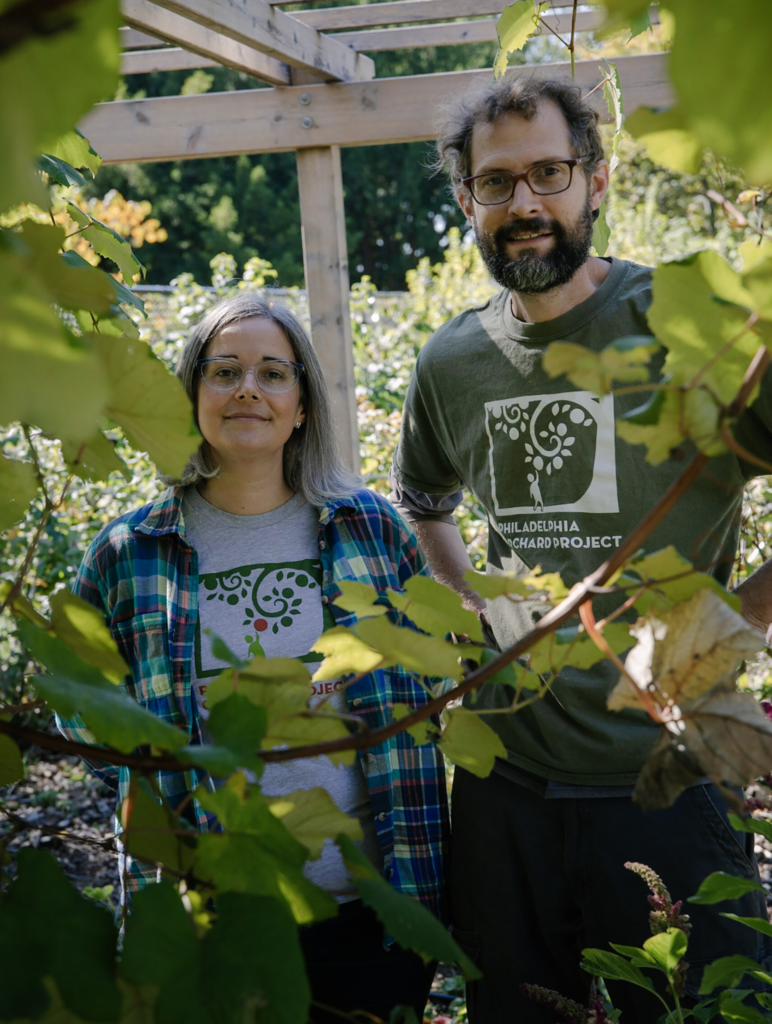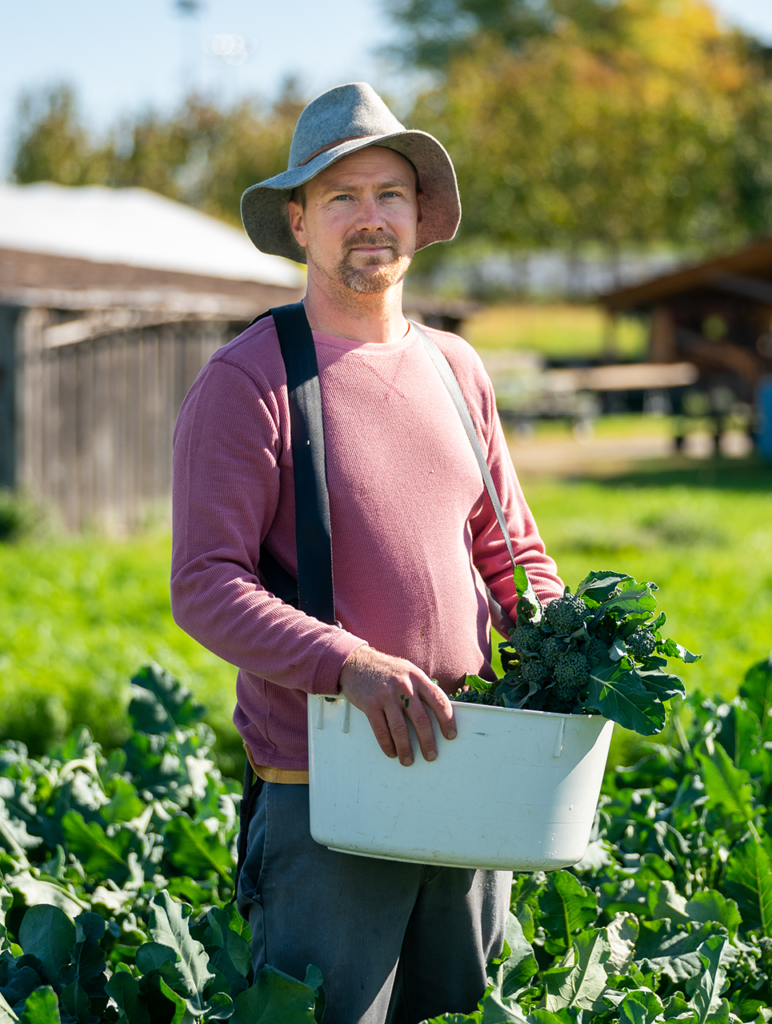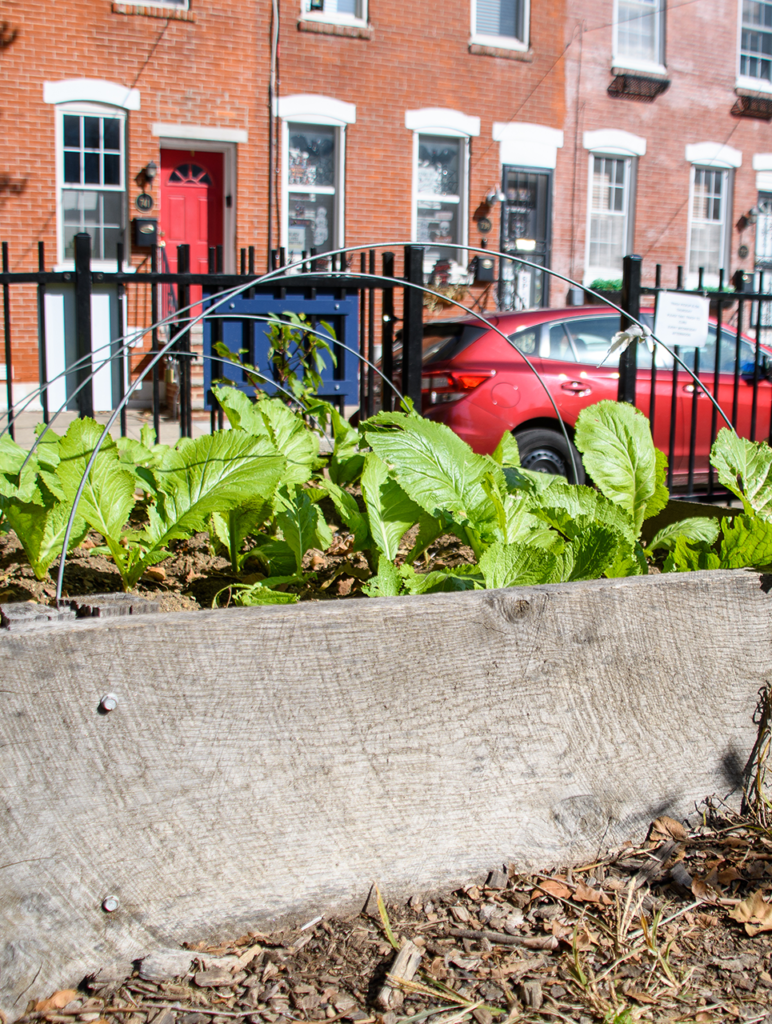On a rainy day in early October, clear water flows from the downspout draining the roof of Peter Zettlemoyer’s livestock corral, bound for Manor Creek just down the hill. Two black and white Holstein heifers that Zettlemoyer is raising for a nearby dairy farmer, amble over to the railing that pens them in to check out the visitors sharing the shelter of the metal roof.
That roof, built with funding from Berks Nature and the USDA’s National Resources Conservation Service (NRCS) in northern Berks County, now keeps the rainwater from falling onto the bedding and manure beneath. “What used to happen was when it would get heavy rain, the corral would fill up with water, and a little pipe that used to come out right around this area,” Zettlemoyer gestured at the base of a low concrete block rim. “I’ll be honest with you. All the manure would ooze out … And of course that all runs down to the creek there. That has all improved, obviously.”
Years ago the cattle were all in the creek, and the streambanks were all beat up. We got the cattle out of the creeks.”
peter zettlemoyer, Pennsylvania farmer
Farming is a low-margin business, and farmers often don’t have money to spare to make improvements that will protect water quality. “The nice thing about NRCS and Berks Nature, I wouldn’t have been able to afford this without them.”
Zettlemoyer rattled off a list of measures that now protect waterways from his farming activities, including better timing for spreading manure on fields, planting cover crops, and putting up fences to keep cattle away from the water. “Years ago the cattle were all in the creek, and the streambanks were all beat up. We got the cattle out of the creeks.”

Berks County farmer Peter Zettlemoyer is dedicated to limiting manure from washing into local waterways. Photography by Troy Bynum.
A multi-faceted defense of the watershed
About a quarter of the Schuylkill River basin is farmland, though that might be hard to believe from the vantage of urban Philadelphia, where two-thirds of the city drinks its water. The rain running off the roof of Zettlemoyer’s corral will end its journey flowing under the Girard Point Bridge, where the Schuylkill flows into the Delaware.
Zettlemoyer farms about 650 acres for a mix of crops including hay, rye, wheat, soybeans and corn. He owns 100 acres, and the rest he leases from other nearby landowners. A verdant mix of rye grass, sunflowers and radishes greets the rain from a field Zettlemoyer leases from Chris Schucker’s family, just uphill from a small unnamed stream, itself a tributary of Manor Creek, which runs along the road. The forested Blue Mountain ridge rises into the clouds behind the field. The deep green plants form a “cover crop,” sowed to buffer the soil of a harvested field from rain and snow until something else can be planted in the spring.
Along with agricultural practices such as sowing cover crops, the Schuckers have taken other steps to protect their land and the water flowing from it. Their land backs up to Pennsylvania State Game Land 106 on the mountain. There they are working with the NRCS and the Pennsylvania Department of Conservation and Natural Resources to restore forest impacted by invasive plants like Japanese stiltgrass, which blankets the understory, and tree pests such as the emerald ash borer and the hemlock woolly adelgid, which infest and kill the trees they are named for. Working with the Stroud Water Research Center, Schucker has planted trees along the stream, hoping to fill in a section of forest along the waterway.
Planting trees might seem pretty straightforward, but, as Lamonte Garber, watershed restoration coordinator for Stroud, explains, Stroud and its partners have learned that planting trees isn’t as easy as it looks. “We killed a lot of trees 20 years ago. I say ‘killed’ because we planted them in ways that almost ensured they were going to get killed or outcompeted. Since then we’ve totally overhauled how we do these tree plantings, with maintenance being so much more important,” Garber says.
Schucker has been tending his family’s new trees, but Stroud arranges tree maintenance for farmers who do not have the bandwidth to take on the extra task.
Deer are a constant threat to young trees. “Deer suck,” Schucker says. They browse any twigs and leaves within reach, and bucks will strip the bark off a tree and rip off protective cages as they rub the velvet off their antlers in the fall. Smaller mammals such as mice and voles kill young trees in less dramatic ways. They build their nests in the protective wire cages and plastic sleeves (called “tree shelters”) that protect saplings. As other food dies back, they dine on the bark around the base of the sapling, girdling the young trees. “We’re experimenting with gravel now, a small pile of gravel around the shelter to be a barrier so voles can’t get in there,” Garber says.
Down the road, and downstream from the Schuckers’ property, cattle graze in a field along Manor Creek. Although the meadow has a muddy patch around a hay bale feeder, a fence keeps the cattle from hanging out and dropping their manure right in the water. The fence also protects a strip of trees and other vegetation along the creek. “The animals are still there, but now they’re backed up away from the creek, and that muddy heavy animal concentration area is further away from the creek,” Garber says.
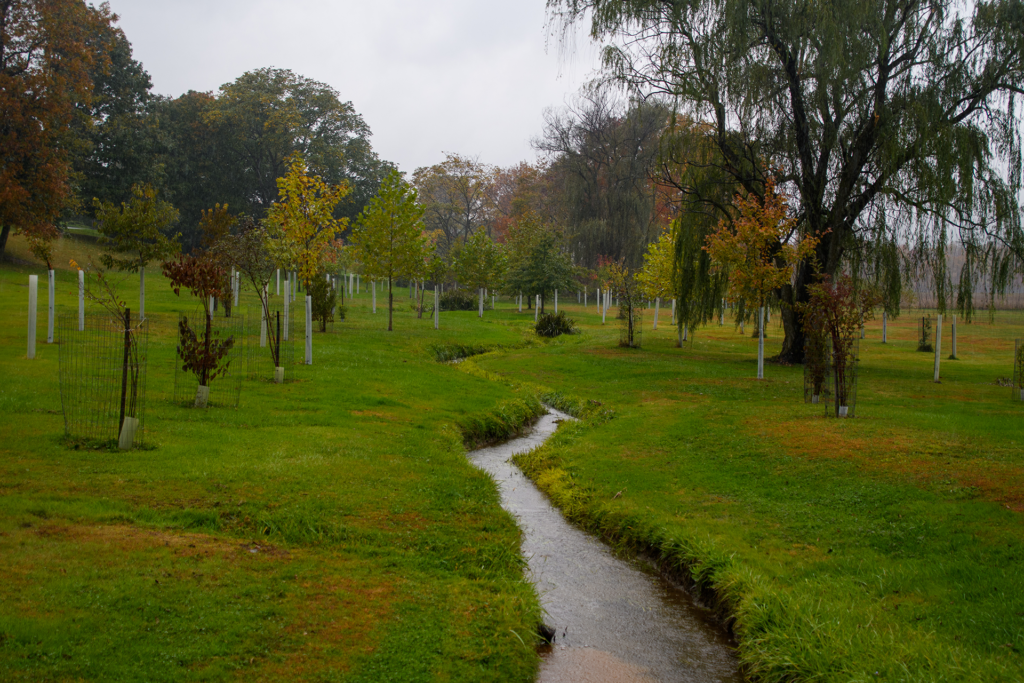
A Berks County stream that runs through agricultural land can be impacted negatively by manure runoff.
What’s working and what isn’t
At another farm along the creek, a solar-powered water sensor station installed by the Berks County Conservation District keeps track of water quality in Manor Creek. It spits out a constant stream of readings for metrics including water temperature, turbidity (how cloudy the water is) and electrical conductivity, which indicates the amount of dissolved nutrients in the water. The improvements upstream all should improve water quality, but it is critical to know whether they are actually doing the job.
This question of what works best — and how to improve it — is a reason the Delaware River Watershed Initiative, which includes Stroud, Berks Nature and other partners and is largely funded by the William Penn Foundation, has concentrated its efforts along specific subwatersheds such as Manor Creek.
“What we’re doing here is identifying small watersheds where we can concentrate a lot of implementation work,” Garber says, “enough so we’re hoping it will then show up in terms of change for the better in the water and the habitats along the water that we can monitor.”
Garber says Stroud Center entomologists also catch invertebrates that live in the water. Different species can tolerate different levels of water pollution, so finding pollution-intolerant species can demonstrate improving water quality. “That combination of the science and the implementation. Manor Creek and some of these other focus watersheds are like laboratories where the farmers, the conservationists, the scientists are working together not only to build good stuff to make the water cleaner and the streams healthier but also to evaluate what’s working and what isn’t,” he says.
A wood turtle crosses the farm’s driveway in the rain, pausing before sliding its way down to Manor Creek. It likely prowled the creek and its floodplain well before any trees were planted or any buffer fences went up, and it could continue to do so for decades to come. “These streams reflect change along a 400-year period,” Garber says. “We are not going to turn this stream around in a decade, but these aggregated projects stacked up … all the way up to the mountain, that’s a really important part of the change we’ve got to make on the land.”


